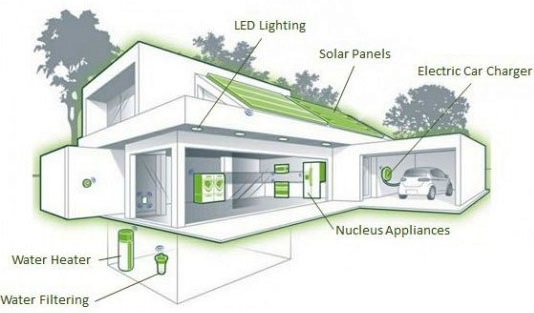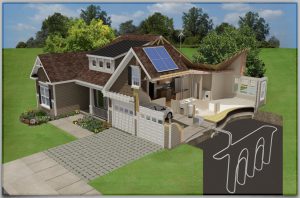Nearer to Zero generates assessments which concern climate issues and energy. All projects undertaken by Nearer to Zero apply innovative online techniques to obtain advice from experts about better progress on near zero emissions. Expert judgment and scientific data forms the basis of Nearer To Zero projects. The expert’s knowledge is integrated with quantitative models and analysis to understand the impact of different views and choices. The findings are then used to promote investment and policy decisions regarding zero carbon housing, zero energy housing and other areas of Nearer to Zero.
Nearer to Zero Conference
The DECC minister, Baroness Verma addressed a Nearer to Zero conference on 14th February 2013 which was held in Birmingham. The department of energy and climatic change organized the Nearer to Zero conference purposely to discuss challenges encountered when encouraging people to occupy new zero carbon homes since 2016 in the Midlands. It was also meant to explore opportunities when issuing the new carbon zero homes. However, the aims of the conference included the following:
- To understand the meaning of zero carbon homes
- To discover ways of achieving zero carbon homes
- To explain the understanding of the costs and the benefits of zero carbon homes
- To find out ways in which planning reform can affect the local development policy
- To understand the duties of local authorities particularly in helping in the delivery of carbon new homes within new localities
- The impact of the green deal on the existing housing market.

Zero energy housing
Zero energy housing refers to an act of making a house or a building to have a net energy consumption of zero. This implies that the sum of energy used by a house or building annually is approximately the same as the quantity of renewable energy produced on the site. These houses produce very few greenhouse gas emissions into atmosphere compared to the same non-zero energy houses. Most non-zero houses obtain most of their energy grid and sometimes return similar amount. The principle of consuming zero net energy is actually a way to decrease carbon emissions and decrease consumption of fossil fuels. While zero energy housing is uncommon in both developed and developing countries, it is gaining in significance and popularity. If you want to calculate a carbon footprint, it is important to consider the secondary factors such as the household’s lifestyle, foods that are consumed, frequency of air travel, distance travelled from work or from school and other measures of the individual’s lifestyle.
Zero carbon housing
Zero carbon housing needs low quantities of energy to cater for the daily functions and needs of the people who occupy the home. Any zero carbon home is viewed to have an annual net carbon footprint of zero. A carbon footprint is defined as a measure of the total greenhouse gas emissions produced either directly or indirectly by home’s activities like driving a car, running an appliance, heating the home, air travel, and the individual’s food consumption and other products. The carbon print of a home is the summation of two parts; primary and secondary footprints. Primary footprints refer to the total carbon dioxide emissions as a result of consumption of fossil fuels directly for transportation and energy consumption. Secondary carbon footprint on the other hand is the amount of carbon dioxide emissions that is associated with the manufacturing processes of products consumed in the home or even the decomposition of these products. The examples of things that constitute secondary carbon footprint are recreational activities, manufacturing of clothes, furnishings and other manufacturing processes.
Advantages of zero energy buildings
- The ownership cost reduces because of increased energy efficiency
- The total cost of living in a month or a year decreases due to increased energy efficiency
- With near zero housing, the risk of loss due to grid blackouts reduces
- The requirements for energy austerity is reduced
- Building owners will not be affected by increases in future energy prices
- The building or the house becomes more comfortable because the internal temperatures are evenly distributed.
- The extra cost incurred is minimized in the case of a new construction when compared to an afterthought retrofit
- The market value of the house increases due to increased energy efficiency and uniform temperatures.
- Legislative restrictions in the future and carbon emission penalties may make expensive retrofits move to less efficient buildings.
Disadvantages of zero energy buildings
- The solar energy captured using the building envelope only functions in areas not obscured from the sun
- There are few people who have the required experience and skills to build the near zero houses
- Associated with higher initial costs it requires effort to understand and apply and also to be eligible for ZEB subsidies if they exist.
- It is difficult to recover the initial costs when you resell the building. However, modern energy rating systems are being established gradually.
Green building versus zero energy houses
 The aim of green building is actually to apply resources in a more efficient way and mitigate the negative impacts of the building on the environment. Zero energy building on the other hand tries to achieve the single main aim of a green building by completely reducing the use of energy and the emissions of greenhouse gases during the entire life of the building.
The aim of green building is actually to apply resources in a more efficient way and mitigate the negative impacts of the building on the environment. Zero energy building on the other hand tries to achieve the single main aim of a green building by completely reducing the use of energy and the emissions of greenhouse gases during the entire life of the building.
Zero energy buildings or houses are not viewed as green in all areas for example using recycled materials or reducing wastes. In fact, zero energy buildings have lower ecological effect throughout the life of the building or the house compared with green buildings which need imported energy or fossil fuel to fulfill the needs of the households.
Meltdown near zero
This refers to a non-corrosive and high performance de-icing product which is used to remove ice and snow from footpaths, roads, parking spaces and other ice related areas. It is used widely by consumers, states and de-icing companies to speed up melting of materials to become environmentally friendly. Meltdown near zero is used to replace traditional sand or salt de-icing techniques since it outsmarts the ancient methods in efficiency and speed. For example, it melts ice or snow up to 60% faster than the normal sand or salt. Its pink colour allows it to apply solar heat to increase the melting strength hence maximum melting results.
